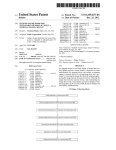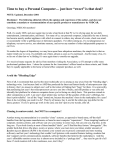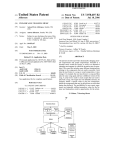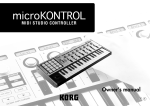Download | ENTER I
Transcript
US006947017B1 (12) United States Patent (10) Patent N0.: Gettemy (54) (75) (45) Date of Patent: Sep. 20, 2005 DYNAMIC BRIGHTNESS RANGE FOR 5,933,130 A * PORTABLE COMPUTER DISPLAYS BASED 5,952,992 A * 9/1999 Helms ON AMBIENT CONDITIONS 6,094,185 A * 7/2000 Shirritf ..................... .. 345/102 Inventor: Shawn R. Gettemy, San Jose, CA (US) 345/102 Primary Examiner—Chanh Nguyen (73) Asslgnee: Palm’ Inc'> Sunnyvale> CA (Us) Notice: 8/1999 Wagner .................... .. 345/690 * cued by exammer _ (*) US 6,947,017 B1 (74) Attorney, Agent, or Firm—Wagner, Murabito & Hao Subject to any disclaimer, the term of this patent is extended or adjusted under 35 LLP (57) ABSTRACT U.S.C. 154(b) by 151 days. (21) Appl' NO': 09/942’437 22 Fl (12 A 1e A portable computer system that comprises dynamically _ 29 2001 adjustable brightness range settings and brightness control u or prov1 Ing Improve user rea a 1 Ity an pro onge (51) (52) Int. Cl.7 .............................................. .. G09G 3/28 US. Cl. ....................................... .. 345/63; 345/690 (58) Field of Search 345/63 77 204 """""""""""""" " ’ ’ ditions or the user can perform the changes. The brightness ’ level of the display changes according to a user selected 345/102’ 207’ 581’ 589’ 690’ 348/602’ 603 setting Within the range selected. The time required to (56) _ com ponent lifetime of the display Screen‘ The main processor can Change the range Settings based on ambient light Con References Cited implement the brightness change can be set to a value Which can be con?gured by the user. U.S. PATENT DOCUMENTS 5,760,760 A * 6/1998 Helms ...................... .. 345/102 21 Claims, 8 Drawing Sheets 60 | ENTER I II LIGHT SENSOR SENDS LIGHT INFORMATION TO PROCESSOR m I PROCESSOR DETERMINES NEED FOR RANGE CHANGE BASED ON CONFIGURATION DATA AND CHANGES RANGE TO DESIGNATED LEVEL QQ I USER PRESET SLIDER POSI11ON REMAINS SAME m V SETI'ING OF SLIDER POSI'HON CHANGES FOR NEW RANGE, COMMENSURATE WITH ITS RELATIVE POSITION WITHIN THE NEW RANGE m V DISPLAY CONTROLLER CHANGES LIGHT TRANSMI'I'I'ED OR EMI'ITED WITHIN DISPLAY DEVICE ACCORDING TO SETTING WITHIN NEW RANGE AND OVER SPECIFIED TIME INTERVAL 650 I RETURN I U.S. Patent Sep. 20,2005 Sheet 1 of 8 US 6,947,017 B1 DISPLAY SCREEN 120 70$ REFLECTOR \ 130 q / ’ EXTERNAL LIGHT SOURCE 103 II REFLECTIVE FIGURE 1A (PRIOR ART) EXTERNAL LIGHT SOURCE 103 w DISPLAY SCREEN [U _ 150 \I/ \gi / \ l\ [I4———-——> BACKLIGHT 140 [I HOLE IN RELECTOR q % / r _ [I \ REFLECTCR TRANSFLECTIVE 16° FIGURE 18 (PRIOR ART) 17o U.S. Patent Sep. 20,2005 Sheet 2 of 8 US 6,947,017 B1 DISPLAY SCREEN 101 BACKLIG HT \ / A0: + EXTERNAL LIGHT SOURCE 103 TRANSMISSIVE FIGURE 1C (PRIOR ART) DISPLAY SCREEN WITH LIGHT EXTERNAL :‘(gHT SOURCE EMITI'ING ELEMENT 12L \\ I 2' i729> EMISSIVE FIGURE1D (PRIOR ART) U.S. Patent Sep. 20,2005 Sheet 3 of 8 FIGURE 28 US 6,947,017 B1 U.S. Patent Sep. 20,2005 Sheet 4 of 8 US 6,947,017 B1 mmDQE U.S. Patent Sep. 20,2005 Sheet 5 of 8 592 FIGURE 4 US 6,947,017 B1 U.S. Patent 5 510 Sep. 20,2005 Sheet 6 of 8 _ US 6,947,017 B1 65 l 35 20 520 — 100 I 60 2O 530 __ I .._l 160 FIGURE 5 300 U.S. Patent Sep. 20,2005 Sheet 7 of 8 US 6,947,017 B1 00 ‘ ENTER I II LIGHT SENSOR SENDS LIGHT INFORMATION TO PROCESSOR m V PROCESSOR DETERMINES NEED FOR RANGE CHANGE BASED ON CONFIGURATION DATA AND CHANGES RANGE TO DESIGNATED LEVEL E‘! II USER PRESET SLIDER POSITION REMAINS SAME 5% II SE'I'I'ING OF SLIDER POSITION CHANGES FOR NEW RANGE, COMMENSURATE WITH ITS RELATIVE POSITION WITHIN THE NEW RANGE m l DISPLAY CONTROLLER CHANGES LIGHT TRANSMITTED OR EMI'ITED WITHIN DISPLAY DEVICE ACCORDING TO SETTING WITHIN NEW RANGE AND OVER SPECIFIED TIME INTERVAL 650 l RETU RN FIGURE 6 I U.S. Patent Sep. 20, 2005 Sheet 8 0f 8 US 6,947,017 B1 35 5 -— 710 65 l i USER ADJUSTS SETTING UP 55 5 — 720 65 l i MOVE TO BRIGHTER ENVIRONMENT COMPUTER ADJUSTS RANGE UP 87 20 — 730 100 l _l l USER ADJUSTS SETTING DOWN 40 20 740 100 l MOVE TO DARKER ENVIRONMENT COMPUTER ADJUSTS SETTING DOWN 2O 5 — 65 750 FIGURE 7 US 6,947,017 B1 1 2 DYNAMIC BRIGHTNESS RANGE FOR PORTABLE COMPUTER DISPLAYS BASED ON AMBIENT CONDITIONS external light competes With the emitted light of the emis sive display screen. Emissive and transmissive displays can not be vieWed very Well in the sun unless the brightness is BACKGROUND OF THE INVENTION turned very high. High brightness can reduce the life of the display and cause poor battery life performance. One conventional approach to adjusting the brightness of the display With respect to the ambient light is to include 1. Field of the Invention The present invention relates to the ?eld of portable computer systems, such as personal digital assistants or photo detectors to adjust the brightness or to turn a backlight on or off. In this approach there is a ?xed brightness range Which does not alWays provide a comfortable vieWing experience for the user. Another conventional approach gives the user manual palmtop computer systems. Speci?cally, embodiments of the present invention relate to a portable computer system equipped With a dynamic brightness range control to maxi miZe readability in various ambient lighting conditions and to prolong the lifetime of the display, the light and the battery. 15 2. Related Art control of the amount of light being produced for the transmissive and emissive display screens. This approach is satisfactory for conscientious users Who regularly monitor the brightness settings and manually adjust them accord A portable computer system, such as a personal digital ingly. HoWever, as is often the case, the user can set the assistant (PDA) or palmtop, is an electronic device that is small enough to be held in the hand of a user and is thus display screen for maximum brightness so that the display is more easily read in sunlight, thereby not having to make frequent adjustments. In the case of the transmissive display, this frequently results in less than optimal battery and backlight lifetime experience. In the case of the emissive display, in addition to a reduced battery experience, the emissive material, usually either an organic or polymer, has “palm-sized.” By virtue of their siZe, portable computer systems are lightWeight and so are exceptionally portable and convenient. These portable computer systems are gen erally contained in a housing constructed of conventional materials such as rigid plastics or metals. Portable computer systems are generally poWered using either rechargeable or disposable batteries. Because of the desire to reduce the siZe and Weight of the portable computer system to the extent practical, smaller batteries are used. 25 a ?nite lifetime. This lifetime becomes severely shortened if the display screen is alWays turned to the maximum setting. SUMMARY OF THE INVENTION Thus, poWer conservation in portable computer systems is an important consideration in order to reduce the frequency at Which the batteries either need to be recharged or Accordingly, What is needed is a system and/or method that can provide a display Which is readable in various replaced. Consequently, the portable computer system is ambient lighting conditions for a various types of display placed into a loW poWer mode (e.g., a sleep mode or deep screens and Which Will provide the user With a pleasant sleep mode) When it is not actively performing a particular battery experience and prolong the life of materials that Would be harmed by excessive brightness. The present invention provides these advantages and others not speci? function or operation. There are many other similar types of intelligent devices (having a processor and a memory, for example) that are cally mentioned above but described in the sections to folloW. A portable computer system or electronic device which siZed in the range of laptops and palmtops, but have different capabilities and applications. Video game systems, cell phones, pagers and other such devices are examples of other types of portable or hand-held systems and devices in includes a lighted display device With dynamically adjust 40 common use. These systems, and others like them, have in common implements the adjustment for the range settings based on prestored range con?guration data and an ambient light some type of screen for displaying images as part of a user interface. Many different kinds of screens can be used, such information signal from the light sensor. In one embodiment as liquid crystal displays, and ?eld emission displays or other types of ?at screen displays. Refer to FIGS. 1A—1D for 45 examples of types of display screens. of the present invention, the lighted display device is trans missive While in another embodiment the lighted display device is emissive. In one embodiment of the present invention, the portable As illustrated in FIG. 1A, a re?ective display is shoWn including a display screen 110 having a re?ective surface 130 so that the display is enhanced in bright external light 103 such as sunlight but requires a front light 120 in darker computer system or electronic device further includes a user adjustment for adjusting the light setting Within the proces sor-implemented range setting for the display device. In environments. The display screen 150 of FIG. 1B can also be trans?ective. It has a re?ector 160 to re?ect light from an external source 103. This re?ector 160 comprises holes 170 through Which light from the backlight 140 can pass for lighting darker environments. FIG. 1C illustrates another type of display screen Which is transmissive. The transmis able range settings, a processor, a light sensor and a display controller is disclosed. In one embodiment, the processor another embodiment of the present invention, the user can change and control the con?guration of the dynamically adjustable range settings. The dynamically adjustable range 55 settings, in still another embodiment, can be overridden by sive display screen 101 has no re?ector so it requires a the user, enabling the user to control the brightness of the display screen. In yet another embodiment, the relative backlight 102. When bright external light, such as sunlight, is present, this external light 103 competes With the back position of the user-adjustable setting Within a given range remains unchanged When the range setting changes. light and it becomes dif?cult to see the transmissive display screen. Another non-re?ective type of display is the emis sive display screen as illustrated in FIG. 1D. Among the family of emissive display screens one ?nds Organic Light In one embodiment of the present invention, the display controller implements an adjustment to the brightness of the Emitting Diode (OLED), Organic Electro-Luminescent (OEL), Polymer Light Emitting Diode (Poly LED), and ment this brightness adjustment is immediate While, in Field Emission Displays The emissive screen 190 contains light emitting elements and, therefore, requires no separate backlight. As With the transmissive screens, bright display device according to the implemented range setting and user-adjustable setting Within said range. In one embodi another embodiment, the brightness adjustment occurs over 65 a longer time period, the time period being user-adjustable. In yet another embodiment, the time period for the bright ness adjustment to occur is a ?xed value. US 6,947,017 B1 4 3 Other features and advantages of the invention Will stored, transferred, combined, compared, and otherWise become apparent from the following detailed description, taken in conjunction With the accompanying drawings, illustrating by Way of example the principles of the inven manipulated in a computer system. It has proven convenient at times, principally for reasons of common usage, to refer to these signals as bits, values, elements, symbols, charac tion. ters, terms, numbers, or the like. It should be borne in mind, hoWever, that all of these and similar terms are to be associated With the appropriate BRIEF DESCRIPTION OF THE DRAWINGS physical quantities and are merely convenient labels applied The accompanying draWings, Which are incorporated in and form a part of this speci?cation, illustrate embodiments of the invention and, together With the description, serve to to these quantities. Unless speci?cally stated otherWise, as 10 explain the principles of the invention: the folloWing terms refer to the actions and processes of a FIG. 1A illustrates a re?ective display screen for use With a portable computer system or electronic device. FIG. 1B illustrates a trans?ective display screen for use With a portable computer system or electronic device. 15 FIG. 1C illustrates a transmissive display screen for use With a portable computer system or electronic device. a portable computer system or electronic device. FIG. 2A is a topside perspective vieW of a portable computer system in accordance With one embodiment of the Exemplary Palmtop Platform present invention. The embodiments of the present invention may be prac ticed on any electronic device having a display screen, e.g., a pager, a cell phone, a remote control device, or a mobile 25 FIG. 2A is a perspective illustration of the top face 200a of one embodiment of the portable computer system 300 of the present invention. The top face 200a contains a display playing the range and the user-controllable brightness adjustment according to one embodiment of the present screen 105 surrounded by has a top layer touch sensor able to register contact betWeen the screen and the tip of the stylus 80. The stylus 80 can be of any material to make contact With the screen 105. The top face 200a also contains one or more dedicated and/or programmable buttons 75 for invention. FIG. 5 illustrates one embodiment of the present inven tion, shoWing examples of computer generated and on screen displayed dynamically adjustable range settings for various ambient light conditions, With corresponding 35 FIG. 6 is a block diagram illustrating the process of according to one embodiment of the present invention. 40 DETAILED DESCRIPTION OF THE INVENTION In the folloWing detailed description of the present inven 45 tion, numerous speci?c details are set forth in order to provide a thorough understanding of the present invention. HoWever, it Will be recogniZed by one skilled in the art that the present invention may be practiced Without these speci?c details or With equivalents thereof. In other instances, Well knoWn methods, procedures, components, and circuits have not been described in detail as not to unnecessarily obscure aspects of the present invention. Notation and Nomenclature Some portions of the detailed descriptions, Which folloW, (e.g., process 600 of FIG. 6) are presented in terms of selecting information and causing the computer system to implement functions. The on/off button 95 is also shoWn. FIG. 2A also illustrates a handWriting recognition area of the top layer touch sensor or “digitizer” containing tWo changing the range setting and the brightness of the display FIG. 7 illustrates changing of brightness settings by a user and changing of brightness ranges by a processor. computer system. The discussion that folloWs illustrates one exemplary embodiment being a hand held computer system. FIG. 4 is a perspective vieW of the display screen dis dynamically changing brightness settings. computer system or similar electronic computing device. These devices manipulate and transform data that is repre sented as physical (electronic) quantities Within the com puter system’s registers and memories or other such infor mation storage, transmission or display devices. The aforementioned terms include, but are not limited to, “scan ning” or “determining” or “generating” or “identifying” or “comparing” or “sorting” or “selecting” or “implementing” or “displaying” or “initiating” or the like. FIG. 1D illustrates an emissive display screen for use With FIG. 2B is a bottom side perspective vieW of the portable computer system of FIG. 2A. FIG. 3 is a block diagram of an exemplary portable computer system upon Which embodiments of the present invention may be practiced. apparent from the folloWing discussions, it is appreciated that throughout the present invention, discussions utiliZing 55 regions 106a and 106b. Region 106a is for the draWing of alphabetic characters therein (and not for numeric charac ters) for automatic recognition, and region 106b is for the draWing of numeric characters therein (and not for alpha betic characters) for automatic recognition. The stylus 80 is used for stroking a character Within one of the regions 106a and 106b. The stroke information is then fed to an internal processor for automatic character recognition. Once char acters are recogniZed, they are typically displayed on the screen 105 for veri?cation and/or modi?cation. FIG. 2B illustrates the bottom side 200b of one embodi ment of the palmtop computer system that can be used in accordance With various embodiments of the present inven tion. An extendible antenna 85 is shoWn, and also a battery storage compartment door 90 is shoWn. A serial port 180 is also shoWn. FIG. 3 is a block diagram of one embodiment of a portable computer system 300 upon Which embodiments of the present invention may be implemented. Portable computer procedures, steps, logic blocks, processing, and other sym system 300 is also often referred to as a PDA, a PID, a bolic representations of operations on data bits that can be palmtop, or a hand-held computer system. Portable computer system 300 includes an address/data performed on computer memory. These descriptions and representations are the means used by those skilled in the data processing arts to most effectively convey the substance of their Work to others skilled in the art. A procedure, computer executed step, logic block, process, etc., is here, and generally, conceived to be a self-consistent sequence of steps or instructions leading to a desired result. The steps are those requiring physical manipulations of physical quanti ties. Usually, though not necessarily, these quantities take the form of electrical or magnetic signals capable of being 65 bus 305 for communicating information, a central (main) processor 310 coupled With the bus 305 for processing information and instructions, a volatile memory 320 (e.g., random access memory, RAM) coupled With the bus 305 for storing information and instructions for the main processor 310, and a non-volatile memory 330 (e.g., read only memory, ROM) coupled With the bus 305 for storing static information and instructions for the main processor 310. Portable computer system 300 also includes an optional data US 6,947,017 B1 5 6 storage device 340 coupled With the bus 305 for storing Which the user last set it. Refer to FIG. 4 for an illustration information and instructions. Device 340 can be removable. Portable computer system 300 also contains a display device 105 coupled to the bus 305 for displaying information to the of the slider 430, the loW range setting 410, and the high range setting 420. In step 640 of FIG. 6, the processor interprets the bright computer user. ness setting of said slider position 430 relative to the loW range setting 410 and the high range setting 420. For eXample, referring to 510 of FIG. 5, the midpoint setting for In the present embodiment, portable computer system 300 of FIG. 3 includes communication circuitry 350 coupled to bus 305. In one embodiment, communication circuitry 350 is a universal asynchronous receiver-transmitter (UART) module that provides the receiving and transmitting circuits required for serial communication for the serial port 180. Also included in computer system 300 is an optional alphanumeric input device 106 that, in one implementation, a brightness range of 5 nits to 65 nits is 35 nits, Where the same midpoint setting for a brightness range of 20 nits to 10 300 nits, as shoWn on 530 of FIG. 5 is 160 nits. Still referring to FIG. 6, the processor sends a signal to the display controller Which, in step 650, implements the appro priate change to the brightness level over a time period speci?ed by stored display con?guration data so that bright is a handWriting recognition pad (“digitizer”). Alphanumeric input device 106 can communicate information and com 15 ness changes are not abrupt and therefore are transparent to the user. mand selections to main processor 310 via bus 305. In one At any time, the user can display the currently selected implementation, alphanumeric input device 106 is a touch screen device. Alphanumeric input device 460 is capable of registering a position Where a stylus element (not shoWn) range setting and move the slider up or doWn to increase or makes contact. processor Will dynamically adjust the range When the ambi decrease the brightness setting of the display. The computer ent light changes suf?ciently, keeping the brightness level Portable computer system 300 also includes an optional commensurate With the slider position last selected relative cursor control or directing device (on-screen cursor control to the neW range setting. FIG. 7 illustrates user adjustments 380) coupled to bus 305 for communicating user input to the brightness settings and computer processor adjust information and command selections to main processor 310. ments to the brightness range. In one implementation, on-screen cursor control device 380 is a touch screen device incorporated With display device 105. On-screen cursor control device 380 is capable of registering a position on display device 105 Where a stylus element makes contact. The display device 105 utiliZed With 25 setting up to a brightness of 55 nits, as shoWn in step 720. When the user goes into a brighter environment, the com puter processor adjusts the range to that of 20 nits to 100 portable computer system 300 may utiliZe a re?ective, trans?ective, transmissive or emissive type display. In one embodiment, portable computer system 300 nits, as illustrated by step 730. The brightness setting for the previously set slider position is noW 87 nits. The user noW adjusts the setting doWn to a preferred level, e.g., 40 nits as includes one or more light sensors 390 to detect the ambient shoWn in step 740. NoW, When the user enters a darker light and provide a signal to the main processor 310 for determining When to implement a change in brightness range. Display controller 370 implements display control 35 commands from the main processor 310 such as increasing or decreasing the brightness of the display device 105. 40 set slider position is noW 20 nits. The present invention has been described in the context of for eXample, a housing and a processor, such that the device performs certain functions on behalf of the processor. Fur thermore, it is appreciated that these certain functions may include functions other than those associated With navigat interface. In this embodiment the user adjusts the on-screen displayed brightness setting betWeen the loW level 410 of the range and the high level 420 of the range by moving the slider 430 to the right for an increase in brightness or to the left for a decrease in brightness. environment, the computer processor adjusts the range doWn, as shoWn in step 750, so the setting for the previously a portable computer system; hoWever, the present invention may also be implemented in other types of devices having, Referring noW to FIG. 4, a perspective vieW of one embodiment of the portable computer system 400 is shown. The display screen 105 is displaying the user brightness setting Which may be implemented as a graphical user In step 710 of FIG. 7, the brightness setting is at 35 nits on a range of 5 nits to 65 nits. The user adjusts the brightness ing, vibrating, sensing and generating audio output. The preferred embodiment of the present invention, 45 dynamic brightness range for portable computer displays based on ambient conditions, is thus described. While the FIG. 5 illustrates three possible range settings and mid point slide settings. The values are in candelas per square present invention has been described in particular embodi ments, it should be appreciated that the present invention meter (cd/m2), also called nits. These user interfaces are computer generated and displayed on the screen When the user desires to adjust the settings. Range 510 may be used When in a dark or dimly lit environment. Range 520 may be used in a normal office environment and range 530 may be used outdoors in direct sunlight. The units are measured in should not be construed as limited by such embodiments, but rather construed according to the beloW claims. What is claimed is: 1. A portable computer system comprising: nits FIG. 6 is a block diagram illustrating one embodiment of 55 a processor coupled to a bus; a light sensor coupled to said bus and for providing an ambient light information signal to said processor; a lighted display device coupled to said bus and for providing a visual display; a display controller coupled to said bus and for controlling the present invention. In step 610 one or more light sensors detect the ambient light and send a signal representing this information to the processor. The signal can be from a single sensor, or can be the average of signals from a plurality of sensors. The processor then, as shoWn in step 620, accesses said visual display; stored data Which con?gures the ranges and determines if a data storage device coupled to said bus and comprising the ambient light signal requires a change to the brightness precon?gured dynamically adjustable brightness range range. If a change to brightness range is required, the setting data for implementing a plurality of different simultaneously stored ranges, Wherein each stored range of said plurality of stored ranges comprises a brightness range maXimum value and a brightness range minimum value; processor then implements the range change. In step 630 of FIG. 6, according to the present embodi ment, the slider, Which is on the user-adjustable range display of the display device, remains in the position to 65 US 6,947,017 B1 8 7 wherein said processor automatically selects a stored range of said plurality of stored ranges based on said in brightness range betWeen a ?rst selected range and a ambient light information signal from said light sensor for use in dynamic brightness control; an adjustment display coupled to said bus and comprising tion of said slider in said ?rst selected range corre sponds to a different brightness value compared to a second selected range and Wherein further, said posi brightness value corresponding to said same position of said slider in said second selected range. 11. The portable electronic device of claim 10 Wherein a brightness bar With user adjustable slider and a plurality of selectable brightness levels for enabling the said lighted display device is transmissive. user to adjust a brightness setting Within said selected range for said display device; and Wherein a position of said user adjustable slider remains unchanged in response to an automatic change in brightness range betWeen a ?rst selected range and a 12. The portable electronic device of claim 10 Wherein 10 said lighted display device is emissive. 13. The portable electronic device of claim 10 Wherein said lighted display device is re?ective. second selected range and Wherein further, said posi 14. The portable electronic device of claim 10 Wherein tion of said slider in said ?rst selected range corre said lighted display device is trans?ective. sponds to a different brightness value compared to a 15 15. The portable electronic device of claim 10 Wherein brightness value corresponding to said same position of said display controller implements adjustment to brightness said slider in said second selected range. of said display device according to said selected brightness 2. The portable computer system of claim 1 Wherein said range and brightness setting. lighted display device is transmissive. 3. The portable computer system of claim 1 Wherein said lighted display device is emissive. 4. The portable computer system of claim 1 Wherein said lighted display device is re?ective. 5. The portable computer system of claim 1 Wherein said lighted display device is trans?ective. 25 6. The portable computer system of claim 1 Wherein said 19. In a portable electronic device, a method of respond display controller adjusts brightness of said display device according to said range and brightness setting. ing to a change in ambient light conditions comprising: a) detecting said change in ambient light conditions and 7. The portable computer system of claim 6 further comprising a time period for implementing any brightness changes to said display device. 8. The portable computer system of claim 7 wherein a setting for said time period is ?xed. 9. The portable computer system of claim 7 Wherein a setting for said time period is user-con?gurable. 10. A portable electronic device comprising: generating a signal in response thereto; b) in response to said signal, a processor of said portable electronic device selecting a brightness range from a plurality of simultaneously stored brightness ranges based on precon?gured range information for use in 35 device, Wherein each stored brightness range of said plurality of stored brightness ranges comprises a bright a light sensor coupled to said bus and for providing dynamically adjustable brightness ranges, Wherein 40 selected brightness range using a user-adjustable slider, 45 Wherein a position of said user-adjustable slider remains unchanged in response to an automatic change in brightness range betWeen a ?rst selected range and a second selected range and Wherein further, said posi tion of said slider in said ?rst selected range corre sponds to a different brightness value compared to a brightness range minimum value; Wherein said processor selects a brightness range of said brightness value corresponding to said same position of stored brightness ranges based on preset range con?gu ration data and said ambient light information signal from said light sensor for use in dynamic brightness said slider in said second selected range; and e) altering said brightness of said display device based on said brightness setting. control; 20. A method as described in claim 19 Wherein c) com a graphical user interface coupled to said bus and com prising a brightness bar, a user adjustable slider, and a ness range maXimum value and a brightness range minimum value; d) alloWing a user to adjust a brightness setting Within said each stored range of said plurality of stored ranges comprises a brightness range maXimum value and a plurality of user selectable brightness levels, said dynamic brightness control; c) implementing said brightness range to alter the bright ness of a display device of said portable electronic a processor coupled to a bus; ambient light information signal to said processor; a lighted display device coupled to said bus and for providing a visual display; a display controller and for controlling said visual display; a data storage device coupled to said bus and comprising a plurality of simultaneously stored precon?gured 16. The portable electronic device of claim 15 further comprising a time-delay for implementing any adjustment to brightness of said display device. 17. The portable electronic device of claim 16 Wherein said time delay is ?Xed. 18. The portable electronic device of claim 16 Wherein said time delay is user-con?gurable. 55 prises employing a time delay betWeen any brightness transition of said display device. graphical user interface for enabling the user to adjust 21. A method as described in claim 19 Wherein a) is brightness of said display device Within said range performed by a light sensor of said portable electronic setting; and device. Wherein, the position of said user adjustable slider remains unchanged in response to an automatic change













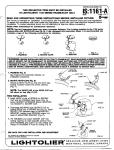
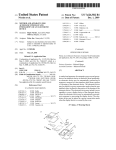
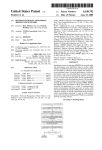
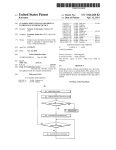
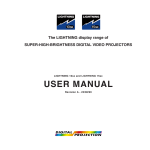
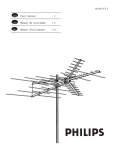

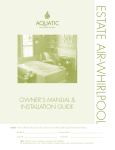
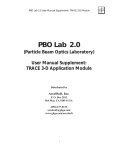

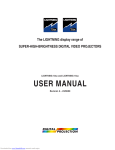
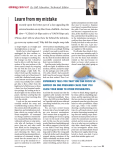


![versão 2.1.0.12 [manual do utilizador]](http://vs1.manualzilla.com/store/data/006044888_1-70dd06ab8e168e0c494c18026b841087-150x150.png)

